Learning the parts of objects by
nonnegative matrix factorization
D.D. Lee from Bell Lab
H.S. Seung from MIT
Presenter: Zhipeng Zhao
�
Introduction
• NMF (Nonnegative Matrix Factorization):
Theory: Perception of the whole is based on
perception of its parts.
• Comparison with another two matrix factorization
methods:
PCA (Principle Components Analysis)
VA (Vector quantization )
�
Comparison:
• Common features:
– Represent a face as a linear combination of basis
images.
– Matrix factorization: VWH
V: nm matrix. Each column of which contains n
nonnegative pixel values of one of the m facial images.
W: (n r): r columns of W are called basis images.
H: (r m): each column of H is called encoding.
�
Comparison (cont’d)
NMF
Representation: parts- Based
PCA
holistic
VQ
holistic
Basis Image: localized features eigenfaces
whole face
Constrains on
W and H:
each face is
each column of H is
allow multiple
basis images to approximated by constrained to be a
represent a face, a linear combi-
unary vector, every
face is approximat-
but only additive nation of all
combinations
the eigenfaces
ed by a single basis
image.
�
Implementation of NMF
• Iterative algorithm:
�
Implementation (cont’d)
• Objective function:
Updates: converges to a local maximum of the
objective function. ( related to the likelihood of
generating the images in V from the basis W and
encoding H.
�
Network model of NMF
�
Semantic analysis of text doc. using NMF
• A corpus of documents summarized by matrix V,
where Vi is the number of times the ith word in
the vocabulary appears in the th document.
• NMF algorithm involves finding the approximate
factorization of this Matrix VWH into a feature
set W and hidden variables H, in the same way as
was done for faces.
�
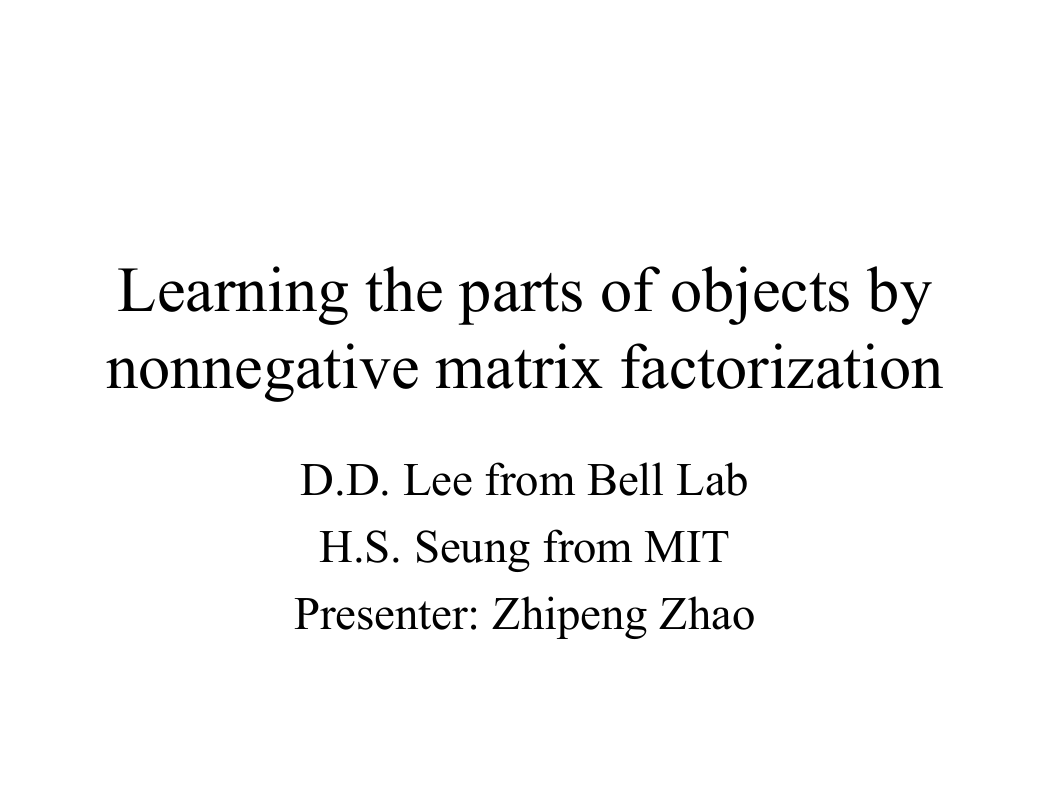
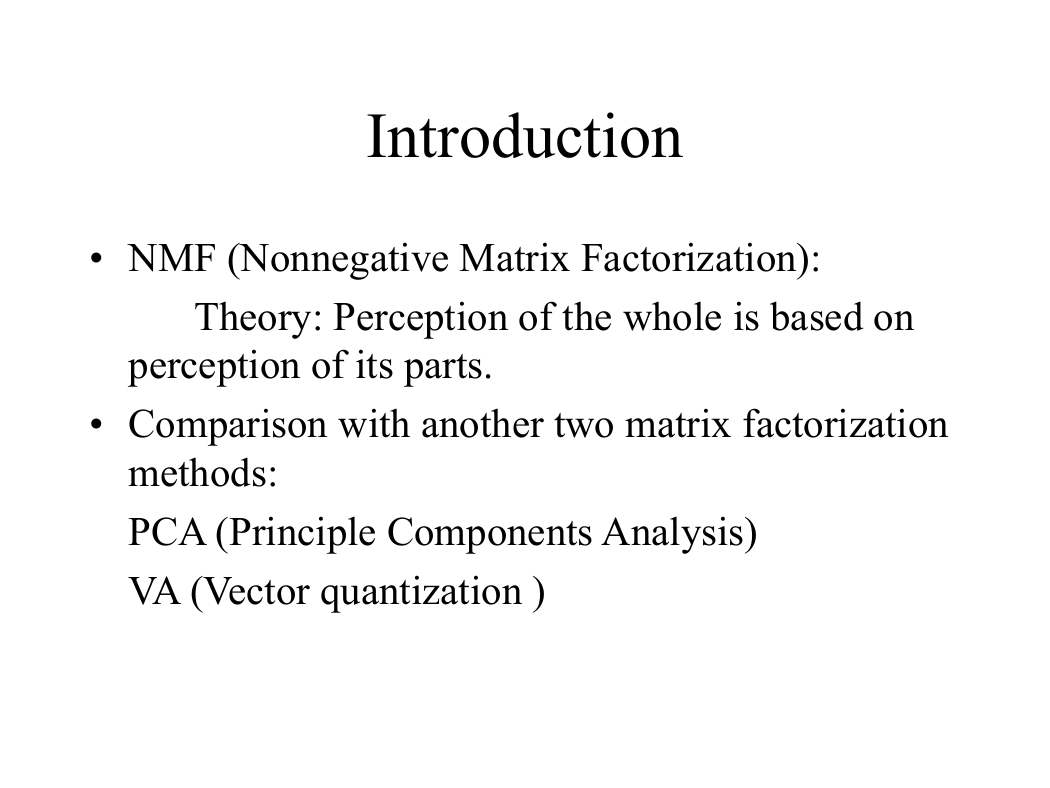

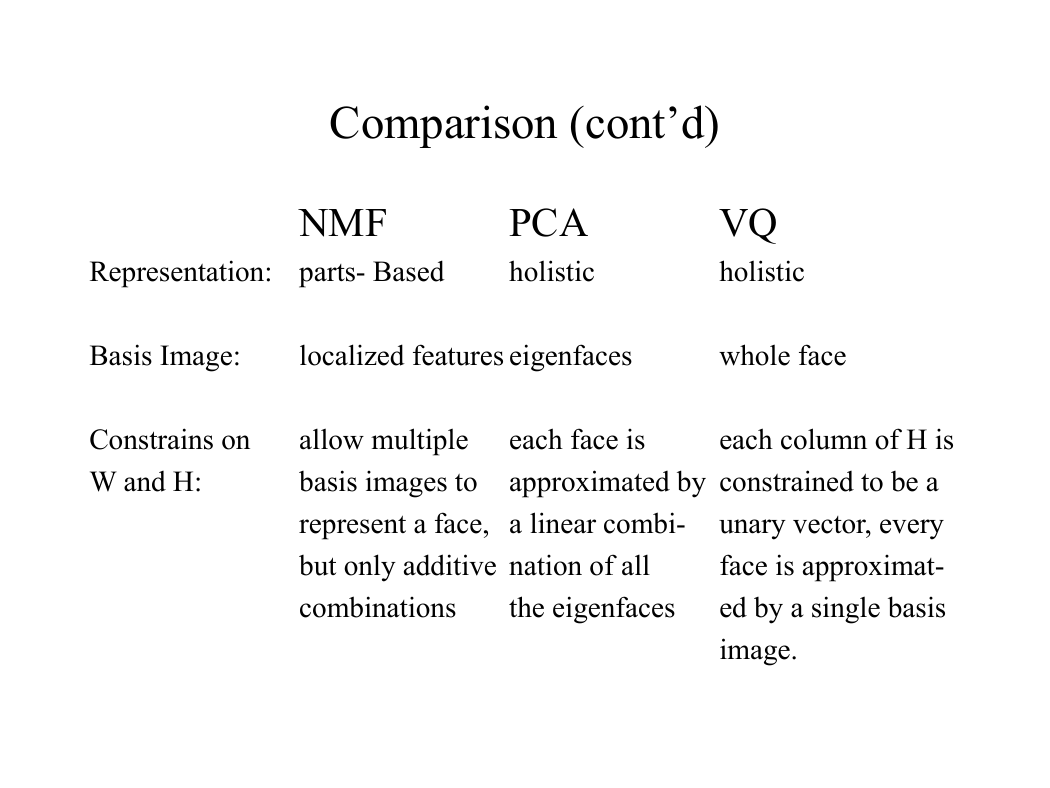
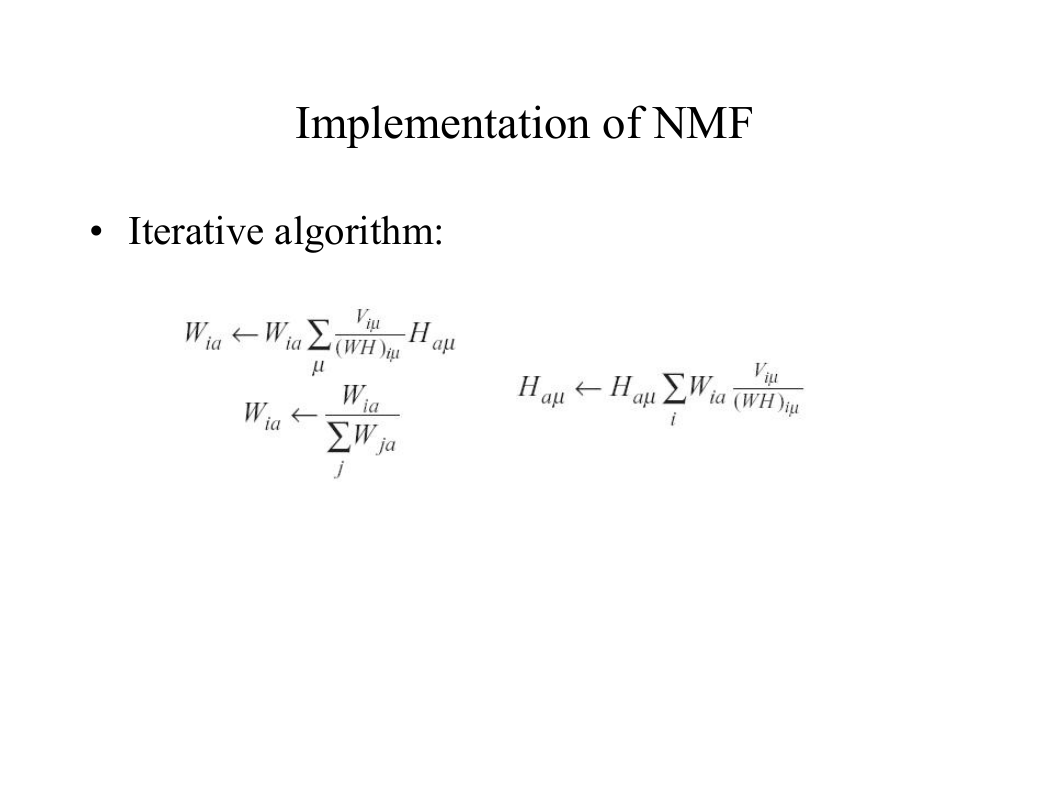
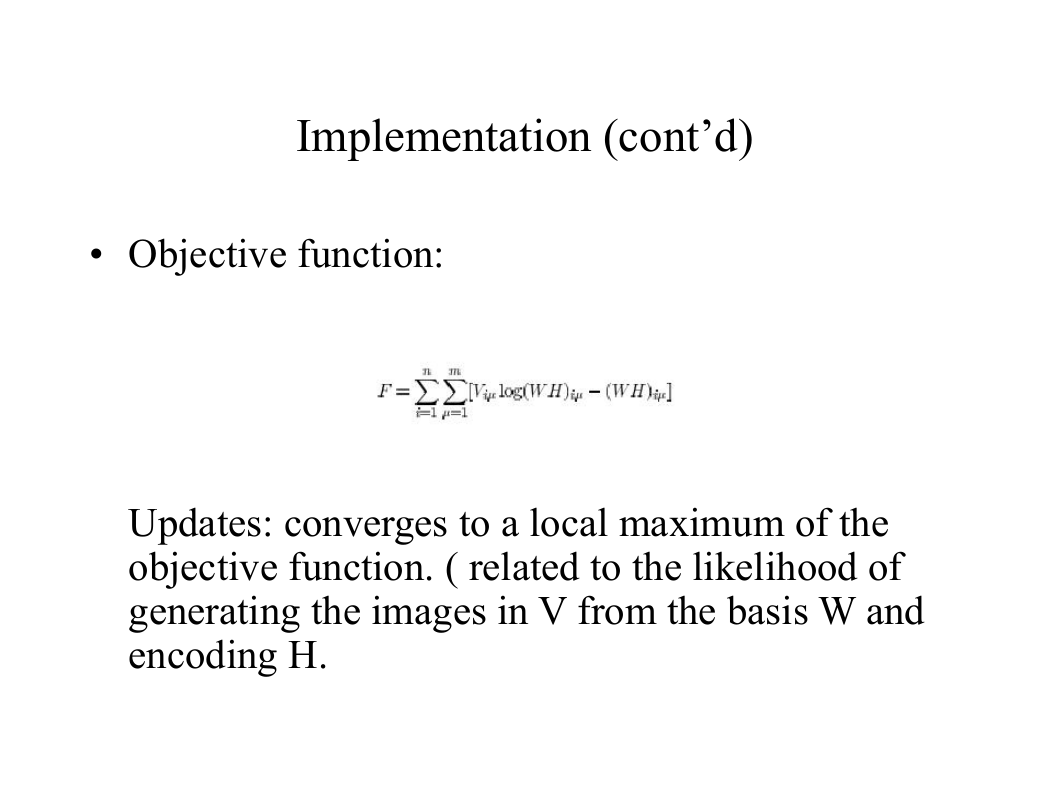
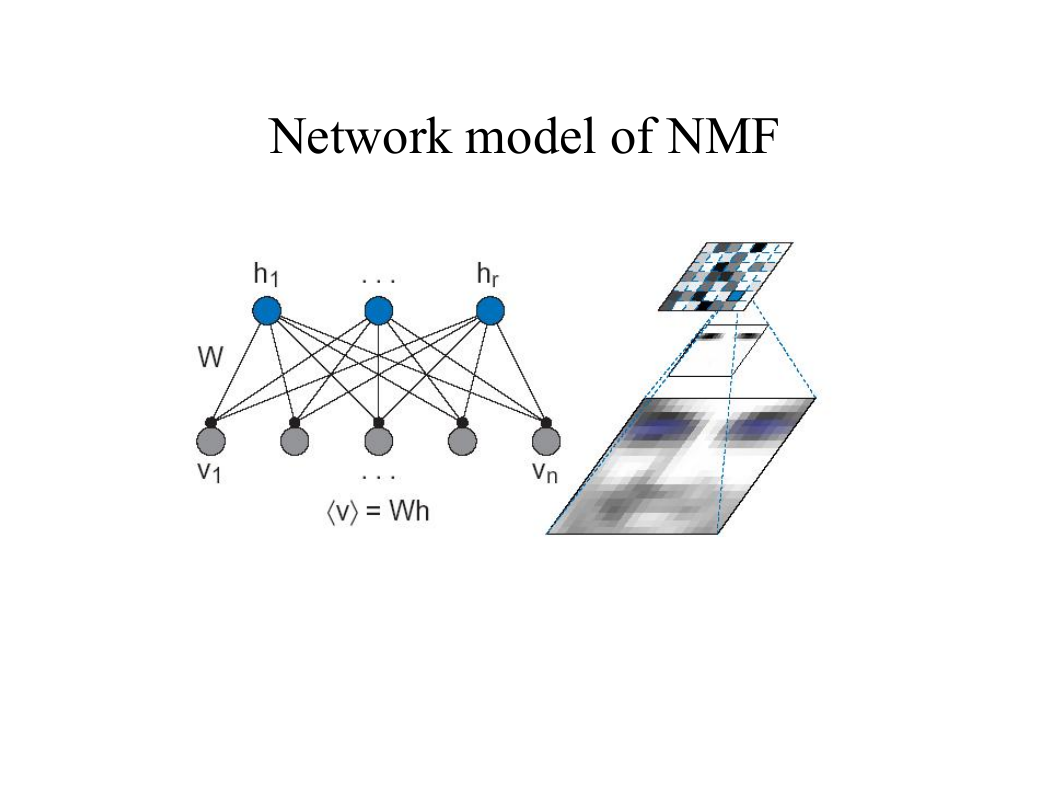
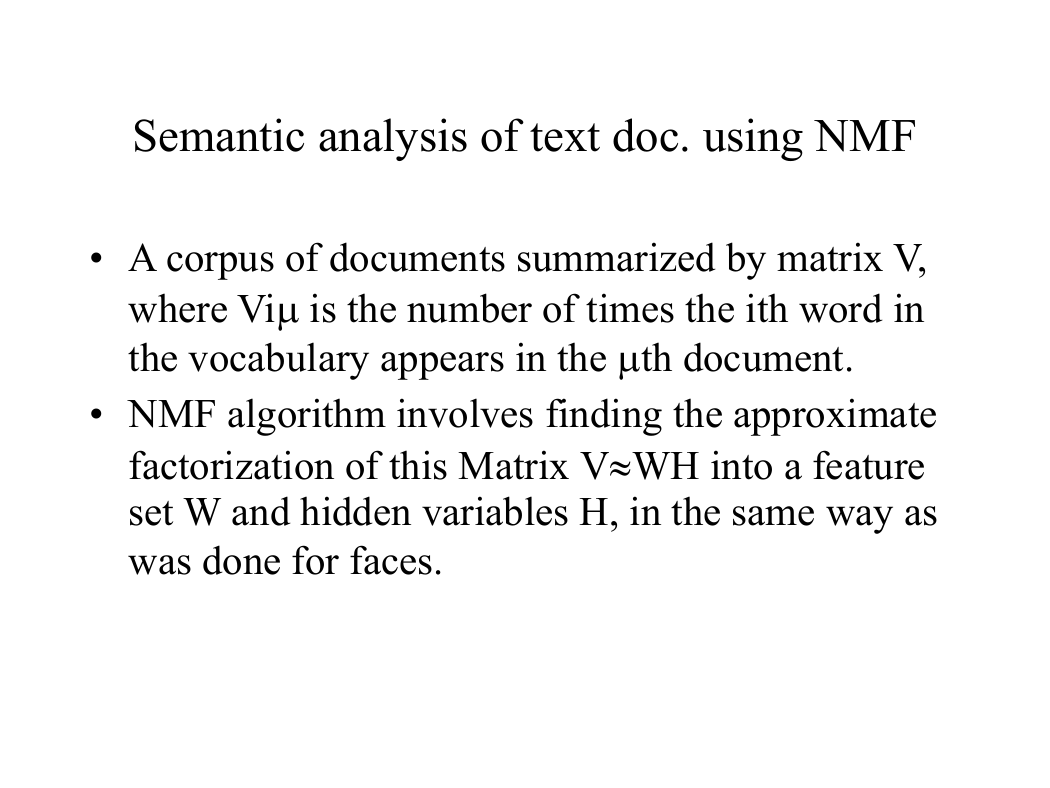








 2023年江西萍乡中考道德与法治真题及答案.doc
2023年江西萍乡中考道德与法治真题及答案.doc 2012年重庆南川中考生物真题及答案.doc
2012年重庆南川中考生物真题及答案.doc 2013年江西师范大学地理学综合及文艺理论基础考研真题.doc
2013年江西师范大学地理学综合及文艺理论基础考研真题.doc 2020年四川甘孜小升初语文真题及答案I卷.doc
2020年四川甘孜小升初语文真题及答案I卷.doc 2020年注册岩土工程师专业基础考试真题及答案.doc
2020年注册岩土工程师专业基础考试真题及答案.doc 2023-2024学年福建省厦门市九年级上学期数学月考试题及答案.doc
2023-2024学年福建省厦门市九年级上学期数学月考试题及答案.doc 2021-2022学年辽宁省沈阳市大东区九年级上学期语文期末试题及答案.doc
2021-2022学年辽宁省沈阳市大东区九年级上学期语文期末试题及答案.doc 2022-2023学年北京东城区初三第一学期物理期末试卷及答案.doc
2022-2023学年北京东城区初三第一学期物理期末试卷及答案.doc 2018上半年江西教师资格初中地理学科知识与教学能力真题及答案.doc
2018上半年江西教师资格初中地理学科知识与教学能力真题及答案.doc 2012年河北国家公务员申论考试真题及答案-省级.doc
2012年河北国家公务员申论考试真题及答案-省级.doc 2020-2021学年江苏省扬州市江都区邵樊片九年级上学期数学第一次质量检测试题及答案.doc
2020-2021学年江苏省扬州市江都区邵樊片九年级上学期数学第一次质量检测试题及答案.doc 2022下半年黑龙江教师资格证中学综合素质真题及答案.doc
2022下半年黑龙江教师资格证中学综合素质真题及答案.doc